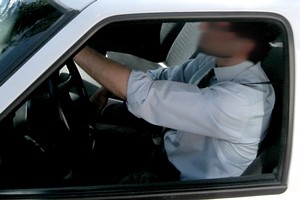Automobile Safety Tip: Driver’s Seat Position
 As anyone who has a long commute to work or drives for a living can tell you, driving can take a toll on your body, especially your back!
As anyone who has a long commute to work or drives for a living can tell you, driving can take a toll on your body, especially your back!
Being behind the wheel for extended periods of time can put a lot of stress on the spine, since the normal lumbar curve can easily be affected the typical driving position. Add to that the bumping and jostling from traveling over uneven road surfaces and speed bumps and you’ve got a recipe for back pain. Following are a few tips that will help you minimize the risk of recurring or chronic back pain by adjusting your driver’s seat to the optimal placement for driving.
- Position yourself properly in the seat. To do this, ensure that you are sitting as far back in the seat as possible, so that your buttocks are almost wedged between the bottom cushion and the seat back.
- Adjust the distance between the seat and steering wheel. Move the seat forward so you can fully depress both the brake and (if necessary) the clutch, while still keeping your knees slightly bent. Your leg should ideally maintain an angle of approximately 120 degrees. If your leg is either too straight or at a 90-degree angle, your seat needs to be moved either closer or further back.
- Adjust the tilt of the seat. Tilt your seat forward or backward until you feel that your leg from hip to knee is fully supported while having your foot on the gas pedal, without feeling that the seat is pressing uncomfortably into the back of your leg.
- Adjust the back of the seat. Your seat should be at an angle that fully supports the length of your back. It should not be reclined too far, as this can cause you to have to bend your head and neck forward at an angle in order to see the road ahead.
- Move the steering wheel. You should move the steering wheel toward you until it is close enough for your hands to reach the standard 10 and 2 position, while keeping your arms slightly bent. Having it too close can be dangerous in an accident, but you also don’t want it so far away that you are straining to reach it. It should be tilted at an angle so your hands are just a little lower than your shoulders while resting on the wheel.
- Adjust the head restraint. The bottom of the head restraint should be level with the base of your skull and should be about an inch from your head while driving in order to help prevent whiplash in the event of an accident.
If your car has a lumbar support feature, adjust it so it supports the lumbar area without pressing into your back. If you don’t have this feature, one or two rolled towels can be used to support the lumbar area.
Try to be sure your knee does not drop to the side while you drive, since this can cause some aggravation to the nerves in the lower back, which can in turn lead to pain in the hip, knee and foot. Pull your knee in to keep it in line with your body.
If you’re the primary (or only) driver of a vehicle, many of these adjustments need to be made only once. For the small investment of a few minutes of your time, you can reduce your risk of recurring or chronic back and neck pain. Trust us, your back and neck will thank you!
Contact Southeastern Healthcare for Back or Neck Pain Relief!
Seeing a chiropractor for neck or back pain is a good idea, since he or she can help identify injuries and start treatment promptly. If you have neck or back pain Wilmington NC, contact Southeastern Healthcare today! Schedule an appointment for a free consultation to see how we can help solve your pain.
